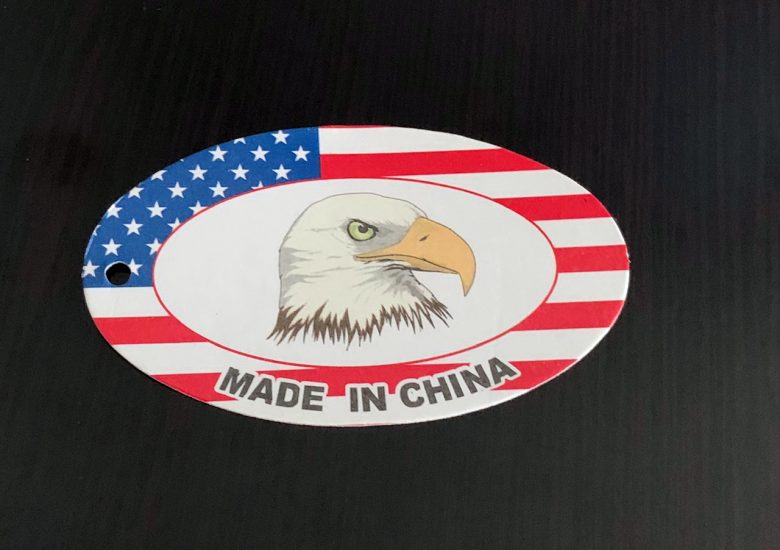
In order to state a product is made in the USA, a company has to comply with the Federal Trade Commission’s Made in the USA standard. The product must be ‘all or virtually all’ made in the US — which includes the 50 states, the District of Columbia, and U.S. territories.
“All or virtually all” means that all significant parts and processing must be of U.S. origin. The product should contain no – or negligible – foreign content. (Source)
While a company doesn’t have to state its product is “Made in the USA” if indeed that’s the case, if it does use this claim, then it has to abide by the FTC’s policy.
When searching for Made in the USA products, it pays to do your due diligence. “Assembled (or designed) in the US” isn’t the same as “Made in USA.”
It’s also easy for companies to mislead you as to country of manufacture.
For example, I recently purchased what I thought was the perfect bathroom scale: analog, metal, heavy duty – aka, the old-fashioned kind.
When purchasing items, I tend to do a lot of searching online (and off) and after some diligent research, I found the Cardinal/Detecto company website.
Although the copy didn’t say “Made in the USA,” the About page did say the company’s headquarters and factory were in Webb City, MO — and that the company sold its products through distributors. It didn’t say anything about multiple factories around the world.
I had to order the scale through Walmart and then wait a week for it to arrive. Once in hand, I carefully unpacked it and realized, with great dismay, it had been made in China.
Feeling like I had been duped by the company, I returned the scale.
What’s in a label?
When you purchase Made in the USA products, you’re doing a number of good things. You’re supporting manufacturers and the people they employ — including their extended families. In January 2019, manufacturing accounted for 12.88 million jobs in the US.
You’re also supporting the industries associated with manufacturing, including the supply chain, transportation, and shipping, as well as the adjacent “Main Street” businesses of the towns and cities in which manufacturers are located.
Most of all, due to U.S. environmental regulations and laws, you’re supporting clean air, water, a reduced carbon footprint, and worker safety and well-being – standards to which off-shored companies often don’t have to adhere.
How to buy USA-Made
- DO: Read the labels on everything. You’d be surprised at what you can find if you simply read the packaging – everything from manufactured goods to food items.
- DO: Research your choices before you buy. When searching online, add “made in USA” to your product search or look for compiled lists, such as USA Love List.
- DO: Ask if you’re not sure. Whether you’re shopping in a retail establishment or online, if you’re not sure if a product is made in the U.S., ask before you buy.
- DON’T: Wait until the last minute if you need something. Finding products made in the U.S. can involve research and often, shipping.
- DON’T: Assume “American” brands are made in the U.S. Hallmark, for example, has quietly moved its greeting card production offshore. (Terrible!)
- DON’T: Give up. Buying U.S.-made does take a certain commitment in terms of time and money. Start off slowly and educate yourself.
